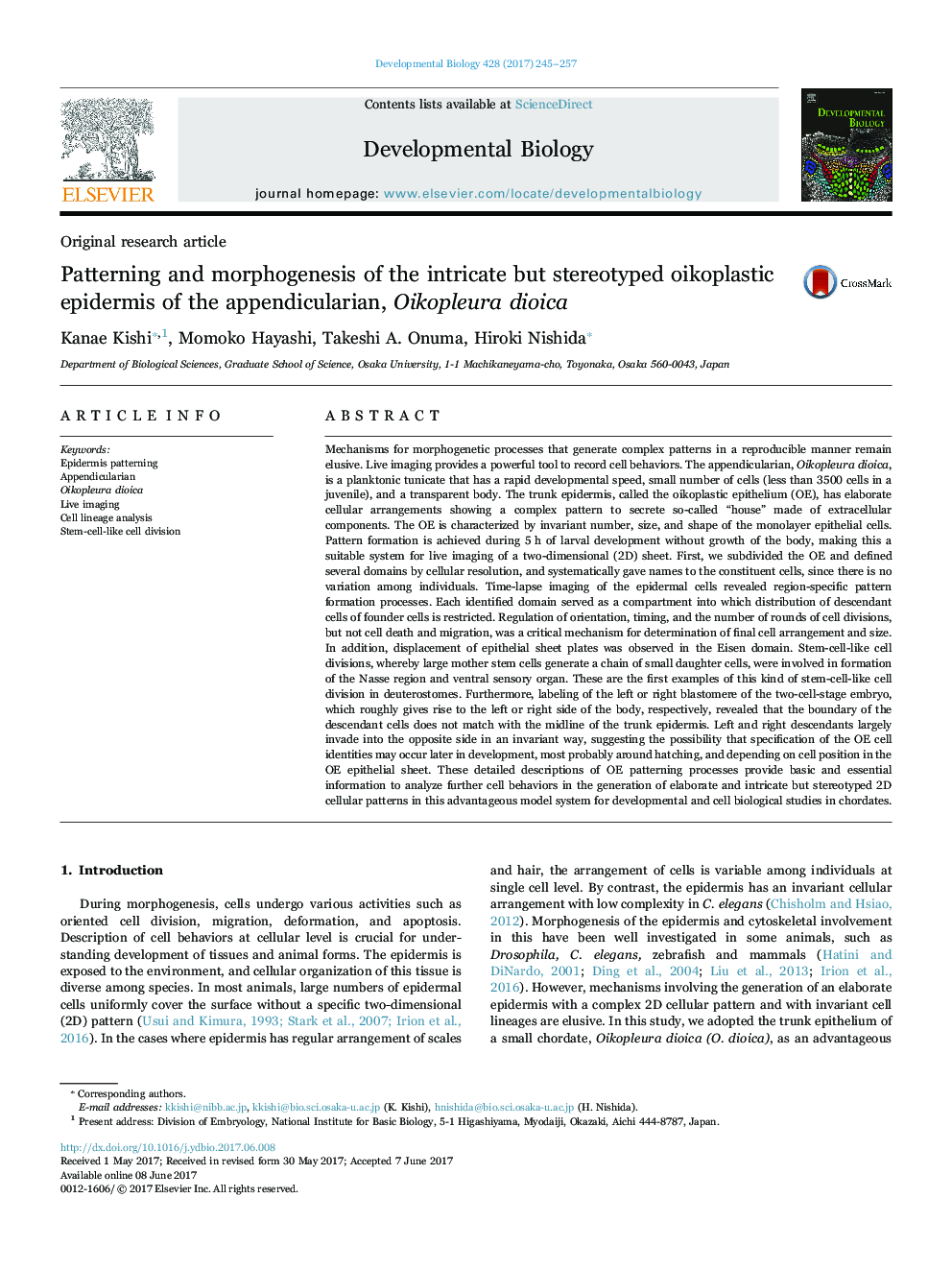| کد مقاله | کد نشریه | سال انتشار | مقاله انگلیسی | نسخه تمام متن |
|---|---|---|---|---|
| 5531657 | 1401805 | 2017 | 13 صفحه PDF | دانلود رایگان |

- Epidermis formation of the chordate, O. dioica, was analyzed by live imaging.
- It has elaborate cellular arrangements showing complex but invariant patterns.
- Domains were defined with cellular resolution and cells were systematically named.
- Orientation, timing, and number of cell divisions were precisely controlled.
- Stem-cell-like cell divisions were also involved in formation of some domains.
Mechanisms for morphogenetic processes that generate complex patterns in a reproducible manner remain elusive. Live imaging provides a powerful tool to record cell behaviors. The appendicularian, Oikopleura dioica, is a planktonic tunicate that has a rapid developmental speed, small number of cells (less than 3500 cells in a juvenile), and a transparent body. The trunk epidermis, called the oikoplastic epithelium (OE), has elaborate cellular arrangements showing a complex pattern to secrete so-called “house” made of extracellular components. The OE is characterized by invariant number, size, and shape of the monolayer epithelial cells. Pattern formation is achieved during 5Â h of larval development without growth of the body, making this a suitable system for live imaging of a two-dimensional (2D) sheet. First, we subdivided the OE and defined several domains by cellular resolution, and systematically gave names to the constituent cells, since there is no variation among individuals. Time-lapse imaging of the epidermal cells revealed region-specific pattern formation processes. Each identified domain served as a compartment into which distribution of descendant cells of founder cells is restricted. Regulation of orientation, timing, and the number of rounds of cell divisions, but not cell death and migration, was a critical mechanism for determination of final cell arrangement and size. In addition, displacement of epithelial sheet plates was observed in the Eisen domain. Stem-cell-like cell divisions, whereby large mother stem cells generate a chain of small daughter cells, were involved in formation of the Nasse region and ventral sensory organ. These are the first examples of this kind of stem-cell-like cell division in deuterostomes. Furthermore, labeling of the left or right blastomere of the two-cell-stage embryo, which roughly gives rise to the left or right side of the body, respectively, revealed that the boundary of the descendant cells does not match with the midline of the trunk epidermis. Left and right descendants largely invade into the opposite side in an invariant way, suggesting the possibility that specification of the OE cell identities may occur later in development, most probably around hatching, and depending on cell position in the OE epithelial sheet. These detailed descriptions of OE patterning processes provide basic and essential information to analyze further cell behaviors in the generation of elaborate and intricate but stereotyped 2D cellular patterns in this advantageous model system for developmental and cell biological studies in chordates.
Journal: Developmental Biology - Volume 428, Issue 1, 1 August 2017, Pages 245-257